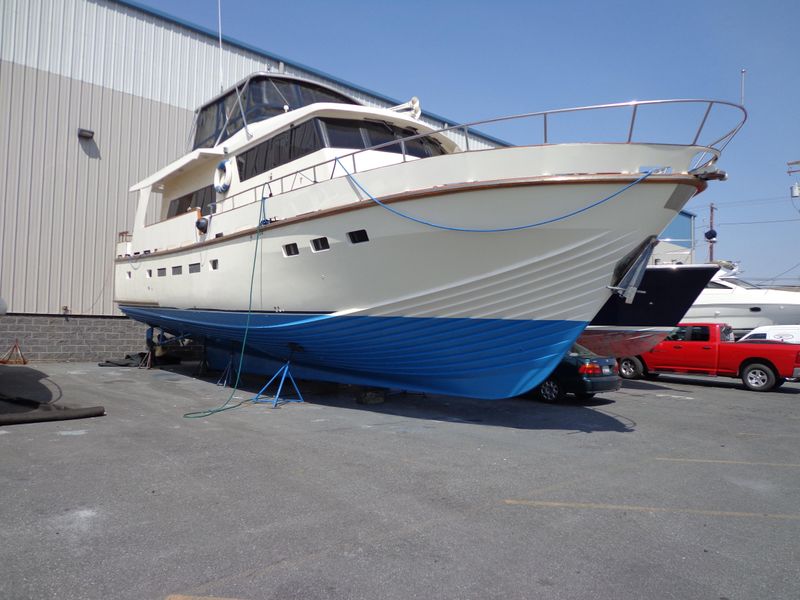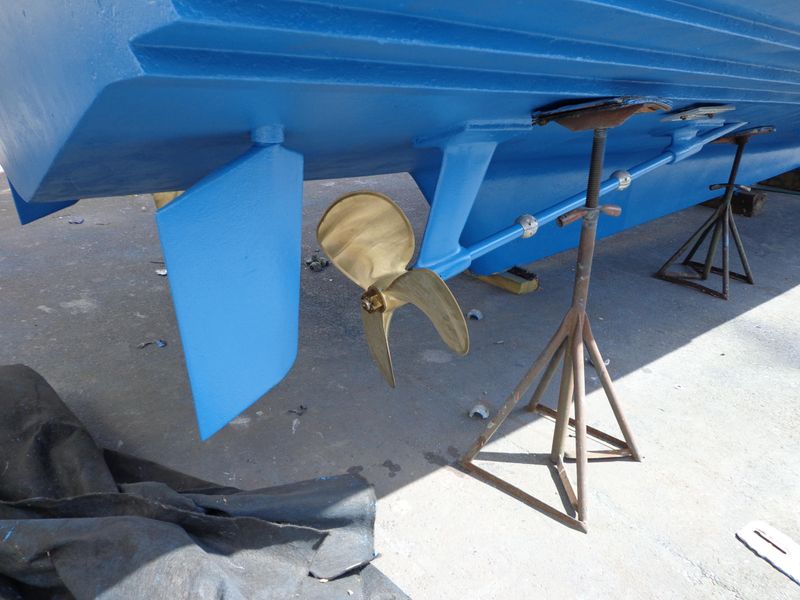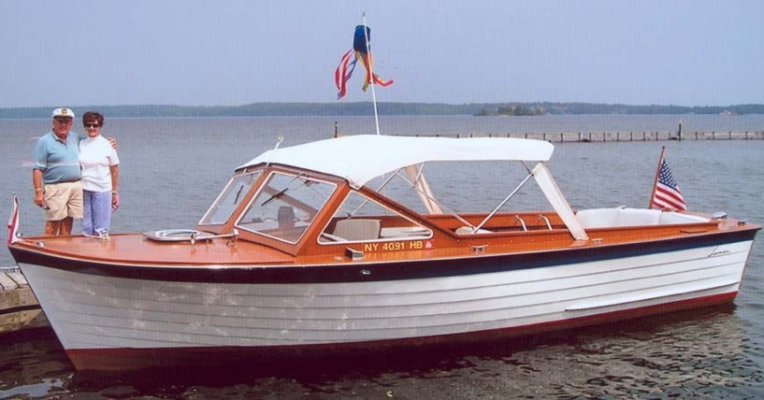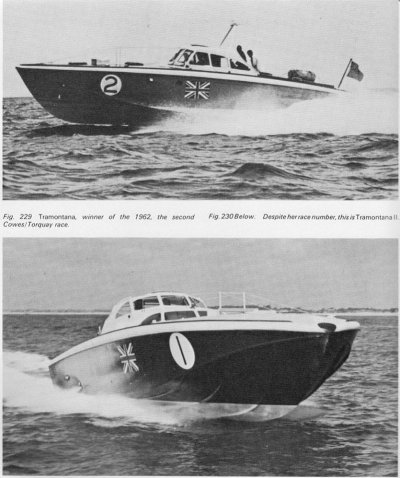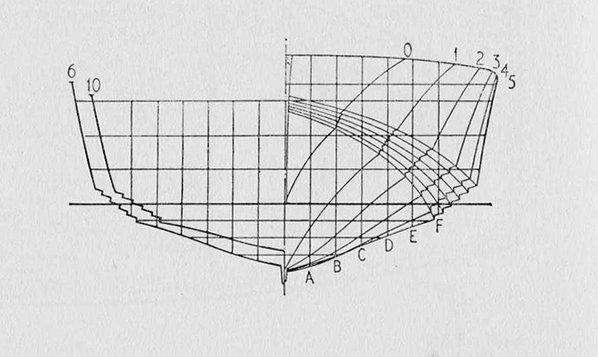Well, by conventional current naval architectural thinking this would be a mistake, or someone trying to fix a mistake by making another. Who knows what the thinking might be, but the result would be minimal, if any. The upper one or two strakes might keep the bow wave from shooting up the topsides and landing in the skipper's face, but that's about it.
I don't think it's one of the early Halmatic hulls Scott, the round version they used had a spray flat in the topsides above waterline. But it may be a variation thereof.
Tramontana was a warped bottom 40' that won the 1962 International Offshore Powerboat Race. She was designed by Commander Peter Du Cane (Vospers) and powered by a pair of monster Italian CRM's, something like 1150HP each. She supposedly went over 50knots. She had no lifting strakes on her bottom. Sonni Levi's boat's of the 1960's, Merry-Go-Round (Sir Max Atkin) and A Speranziella were round bottom deep vees with close spaced tiny lifting strakes. That could be what you are thinking of Eric.
